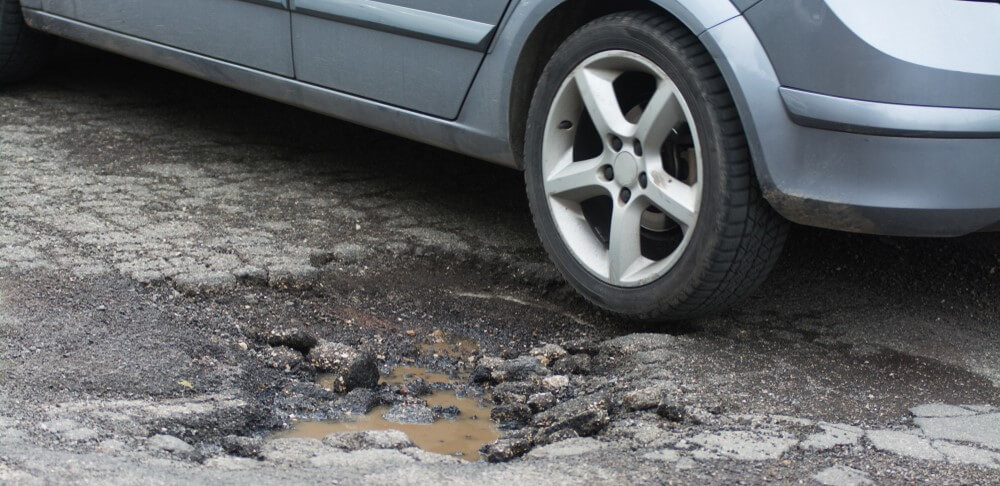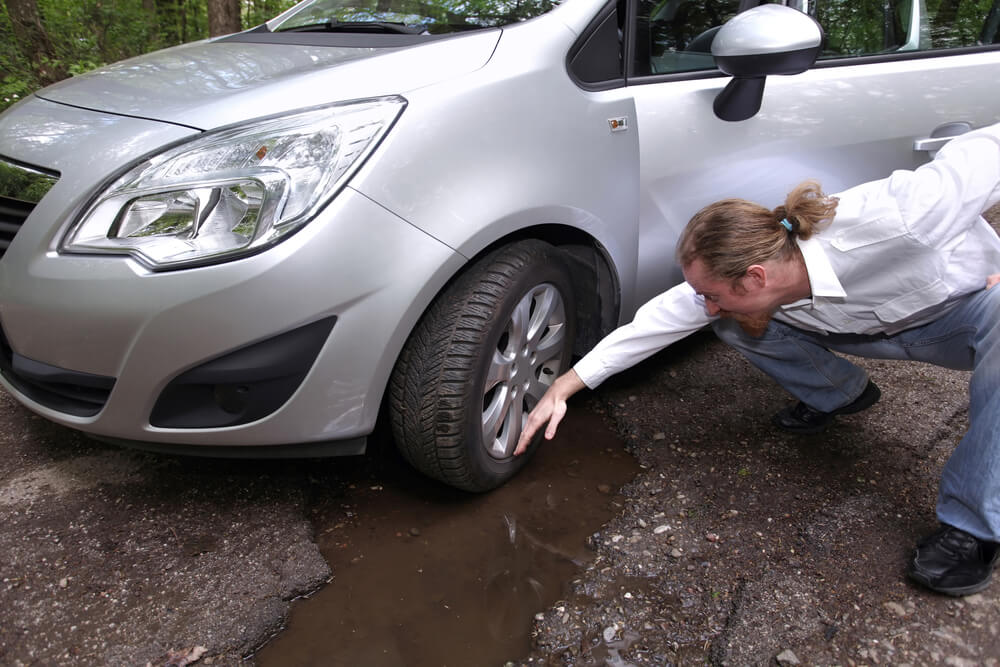How to Avoid Potholes While Driving

Potholes form on neglected stretches of the roadway and can be very problematic for vehicles. So, what causes potholes? They occur due to repeated passage of cars over the asphalt. Also, the spring rain combined with constant thawing of melting snow leads to potholes.
When the road is carrying large amounts of water in its pockets, it wants to escape when there’s traffic on the road. This causes stress on the weaker part of the pavement resulting in potholes.
Check out the info below on how to avoid potholes while driving:
How to Handle and Avoid Potholes Safely
When you hit a pothole with your car, it can cause damage to the tires, chassis, or suspension. Here are some safety tips to help you navigate around potholes on the road:
- You should always leave some space between your car and the one in front of you. If you drive bumper to bumper, you won’t spot the potholes.
- Make sure the tires are well inflated. You may want to refer to the manufacturer’s instructions on the proper pressure of your vehicle. When you over-inflate or under-inflate the tires, the car is likely to be damaged after hitting the potholes.
- As you maneuver through pothole-riddled streets, you should drive slowly. This will give yourself extra time to react when you spot a pothole. And if you see a puddle on the road, drive slowly because you may not know how deep it runs.
- Beware of the road you’re driving and stay focused. And if you see a puddle of water on the road, assume it’s a pothole.
- For a low, sporty car, use the sharp handling to maneuver around potholes. Some potholes are unavoidable; learn how to handle them to save you frustrations on the road.
The Damage Potholes Cause to a Car and How to Spot It
Let’s face it: pothole car damage can be extensive. If you’re not careful, you risk expensive car repairs.
Potholes not only create a bumpy ride, but they can also cause severe damage to your car. One sign of damage is strange noises in your vehicle. You may have damaged something like the vehicle’s exhaust system. To spot the problem, you should take the car for inspection.

If you couldn’t avoid potholes and took some damage from one, your steering may seem off-center. When you notice this, you should take your car for wheel alignment. Also, the steering wheel could start shaking after hitting a pothole. This could be a serious issue with wheel balance.
Another sign of damage is a flat tire. As it can cause extensive damage to the wheels, you should not drive when the tire is flat. If your car doesn’t handle the way it should, you should trust your instincts and take it to a technician.
What Happens if You Don’t Repair Pothole Damage?
When you hit a deep pothole, you may see fluid under your car. If you don’t address the problem immediately, the liquid could invite rust in places you can’t see.
If the repair from pothole damage is extensive, you may want to talk to your insurance agent to see if the policy can help with some of the repair costs.
When driving gets bumpy, be sure to report potholes to the local authority or highway agency. You can take a picture and document the important details. Local authorities will most likely take immediate measures to repair potholes.
Live in a pothole-prone area? Protect yourself with a policy from InsureOne. Our agents are experts at finding the best possible coverage for you. Get a free car insurance quote online, over the phone or at one of our offices near you.





